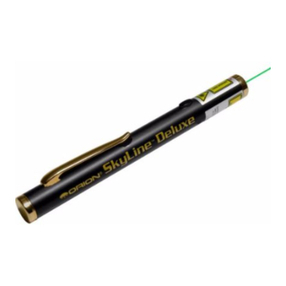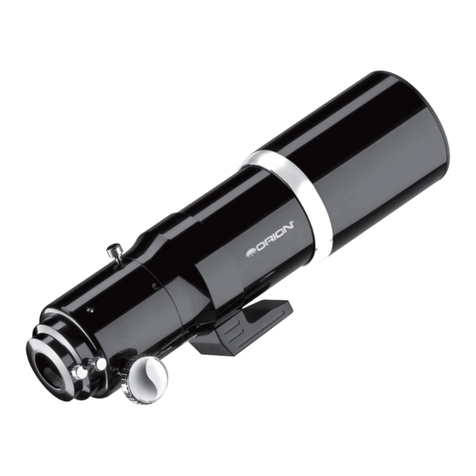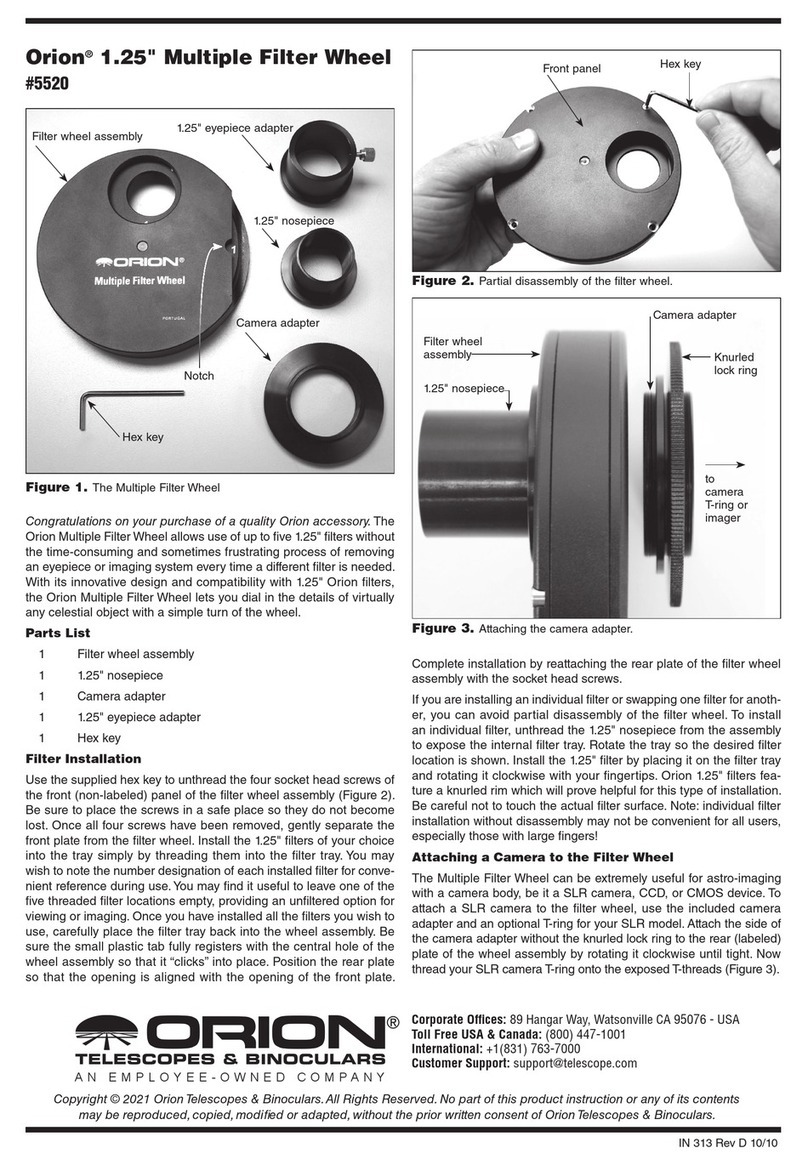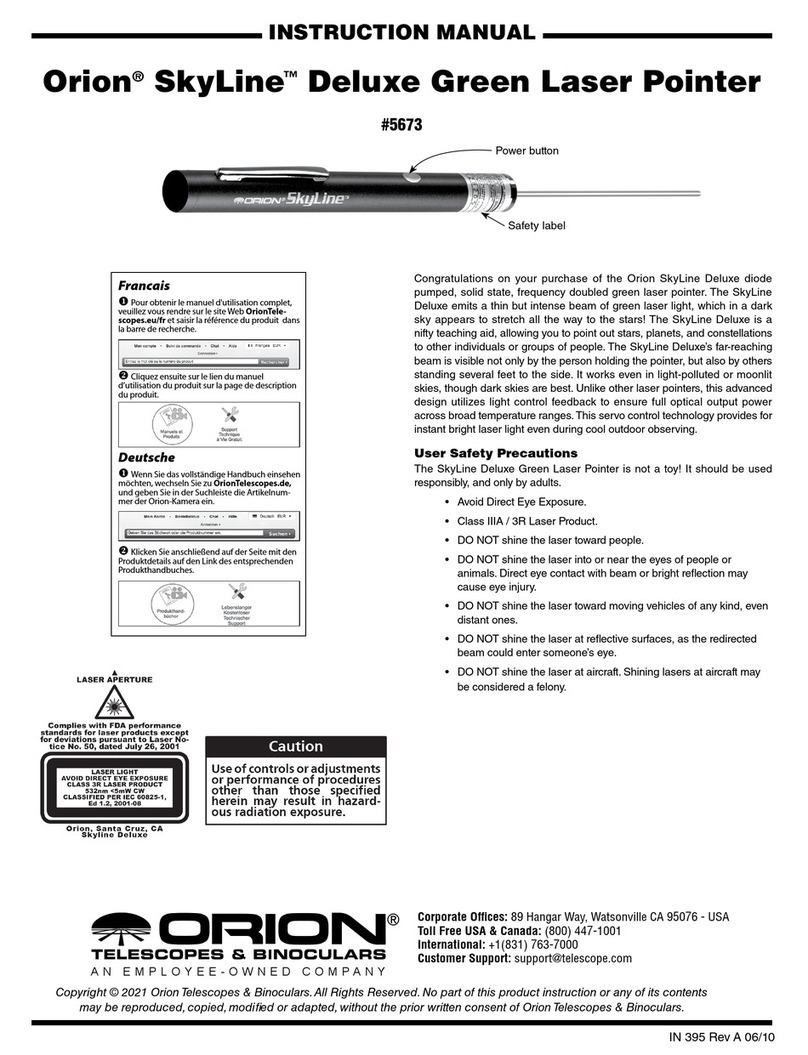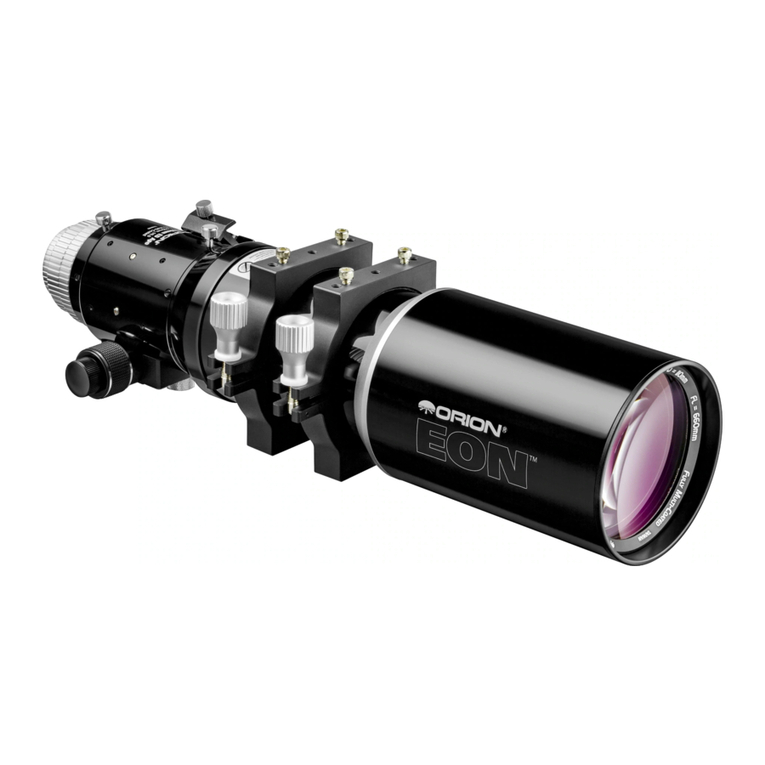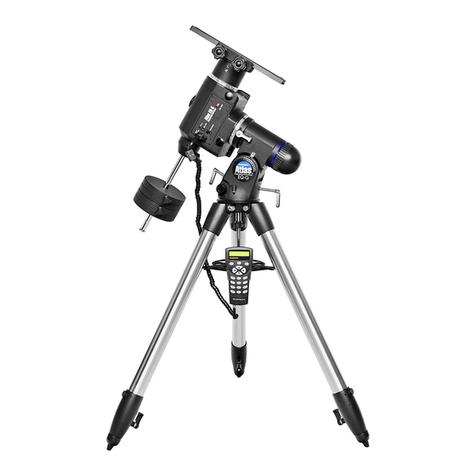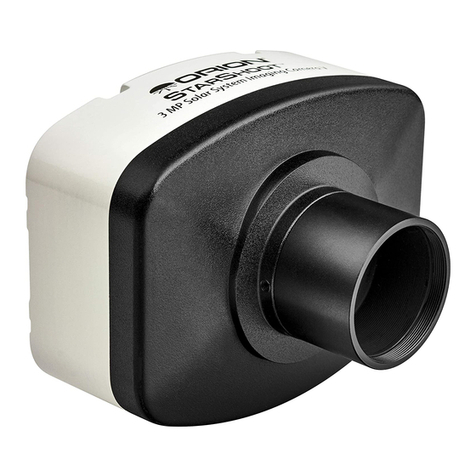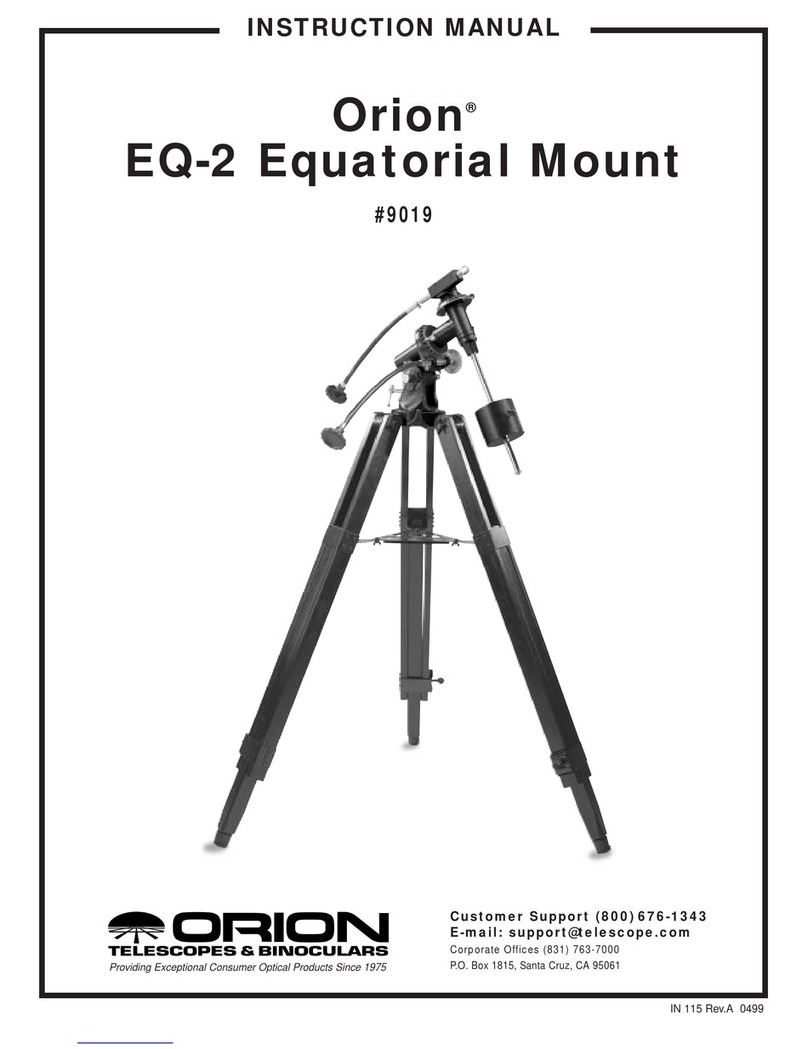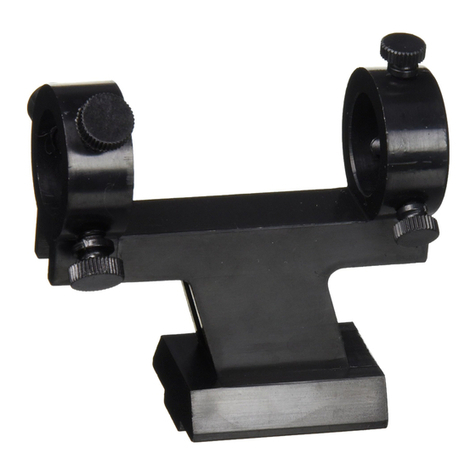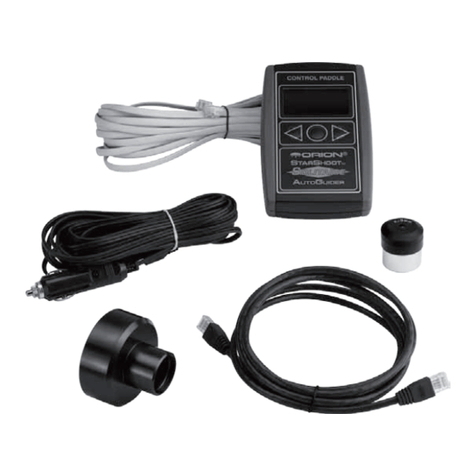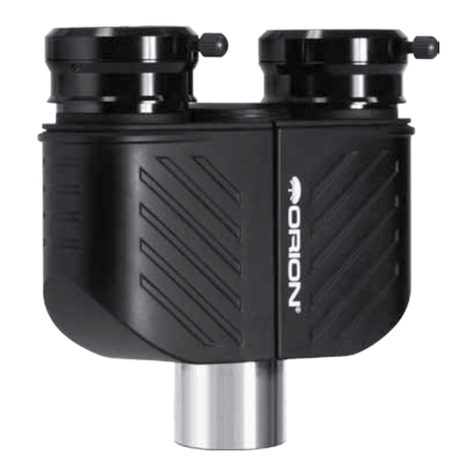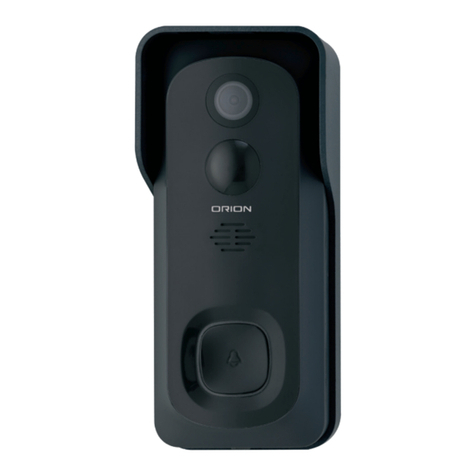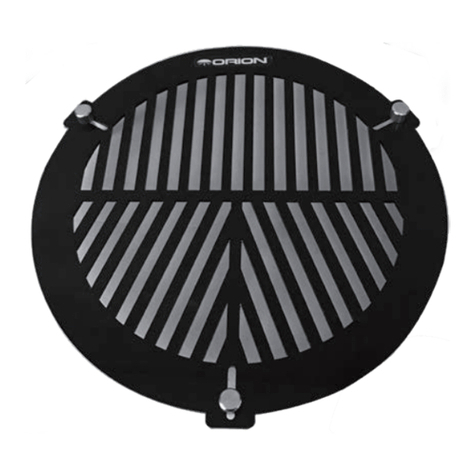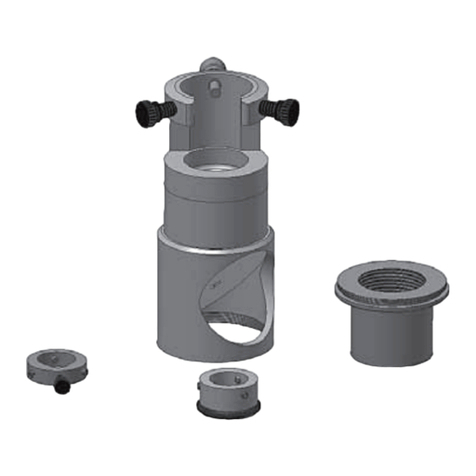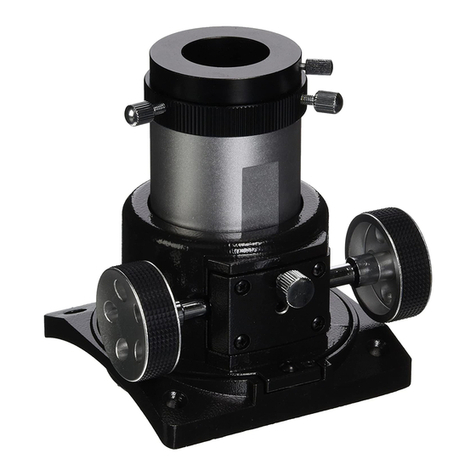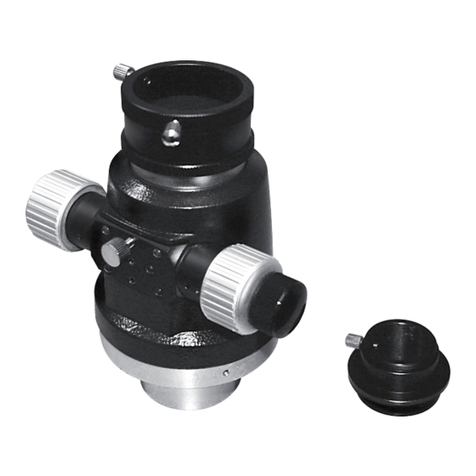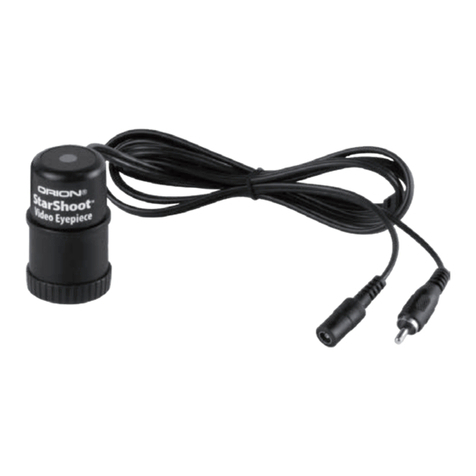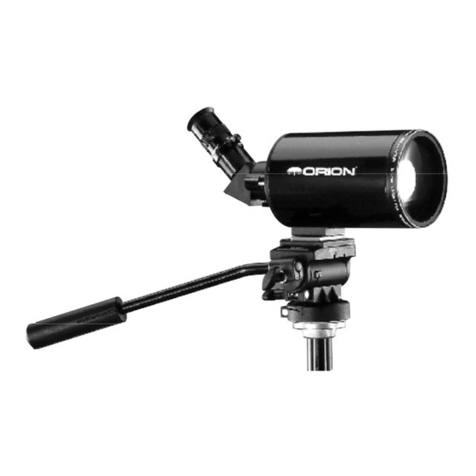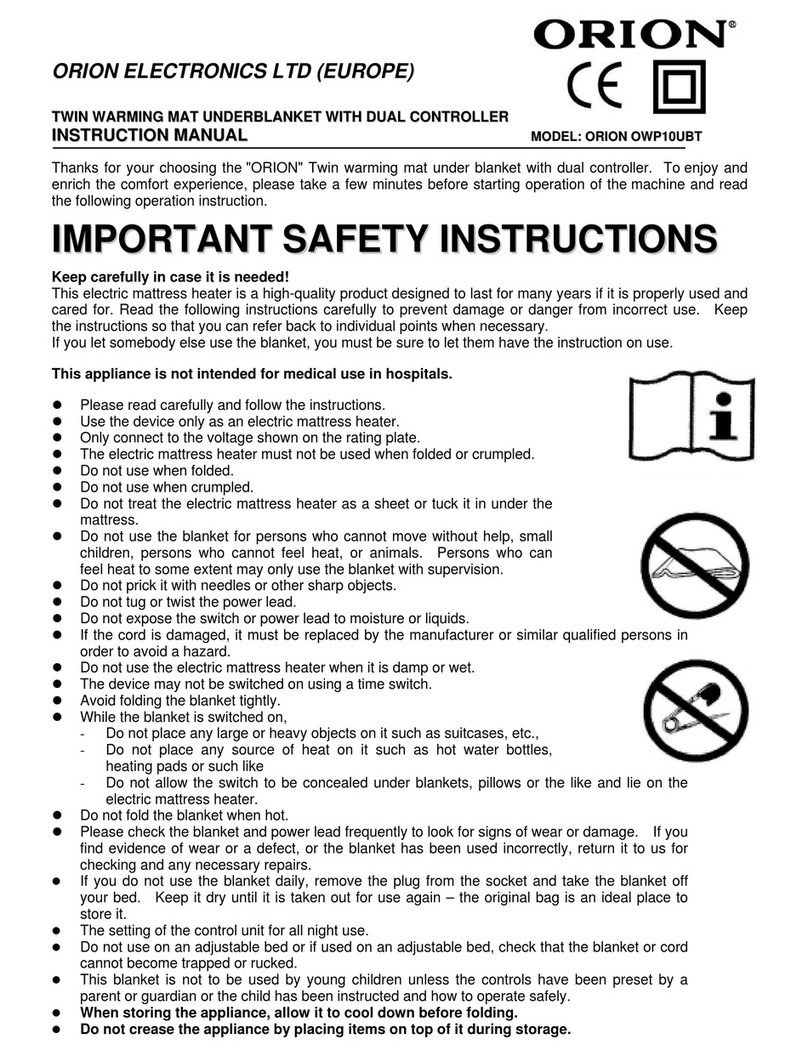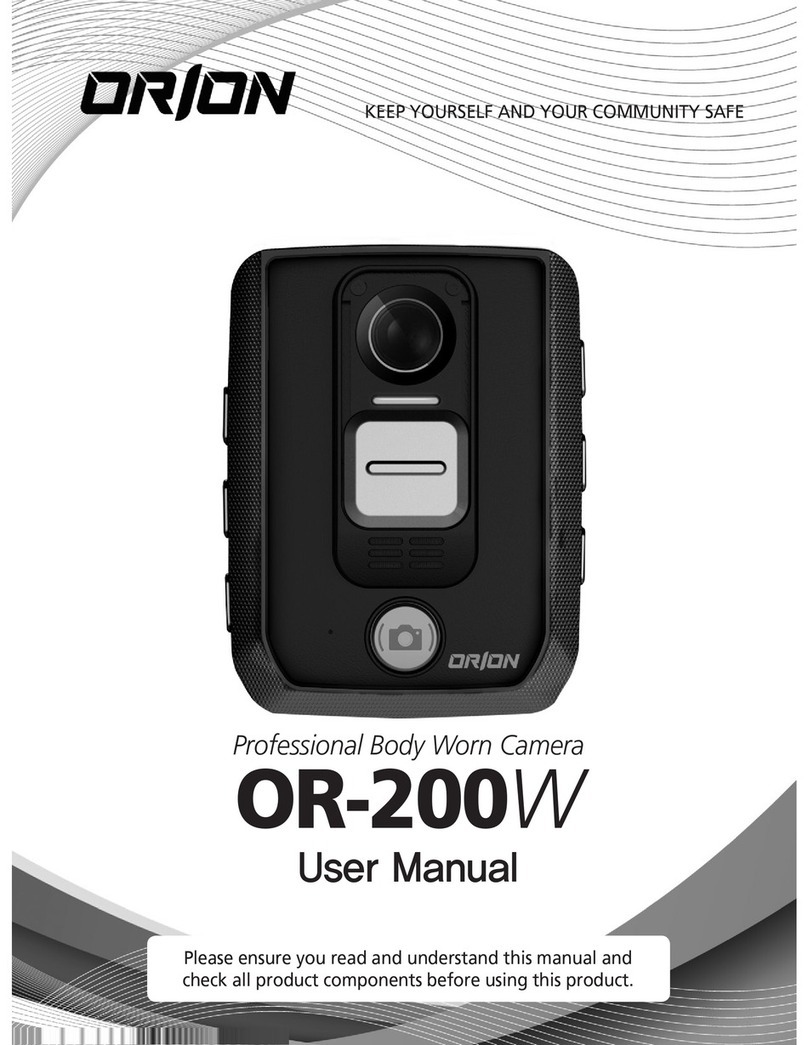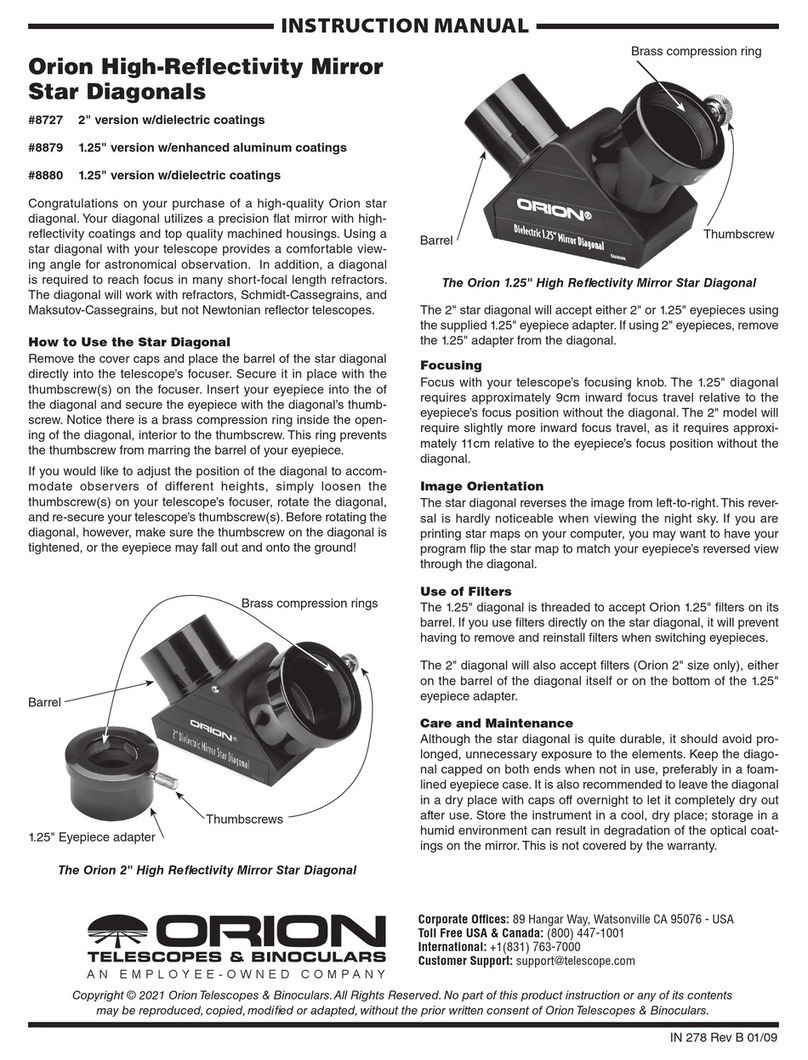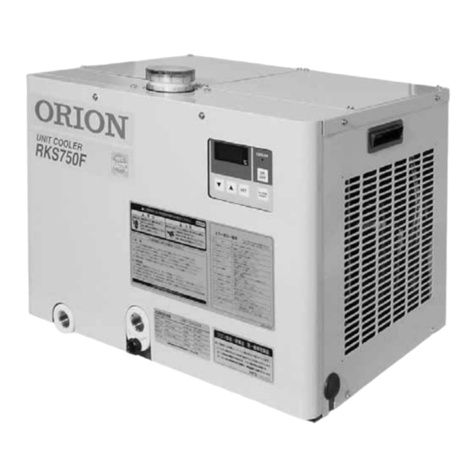4
7. Now, with the counterweight lock knob loose, grip the counter-
weight with one hand and thread the shaft into the equatorial
mount (at the base of declination axis) with the other hand as
far as it will go.Position the counterweight about halfway up the
shaft and tighten the counterweight lock knob.
8. Orient the equatorial mount as it appears in Figure 1, at a
latitude of about 40°, i.e., so that the pointer on the latitude
scale is pointing to the hash mark at 40.To do this, loosen
the latitude lock knob and adjust the mount until the point-
er lines up with the “40.” (You will notice there are two 40
designations on the scale. Set the pointer on the 40 such
that the letters “R.A.” printed near the R.A. setting circle
face upward, rather than downward.) Then retighten the
latitude lock knob. Also tighten the declination (Dec.) and
right ascension (R.A.) lock knobs.
9. Now attach the two slow-motion cables to the R.A.and Dec.
worm gear shafts of the equatorial mount by positioning the
setscrew on the end of the cable over the indented slot on
the worm gear shaft, then tightening the setscrew. The
equatorial mount is now set up and ready to use.
Notice that on one end of the R.A. worm gear is a knurled
metal wheel, below which is a free-swinging metal tab.Those
parts are designed for use with an older model of R.A. motor
drive that is no longer readily available. The motor drive we
carry (#17001) as an optional accessory for this mount does
not require these parts (in fact, they have to be removed as
part of the motor installation procedure).
3. Attaching a Telescope
The Orion Equatorial Mount is designed to hold small to mid-
size telescopes weighing up to about 8 lbs. For heavier
telescopes, the mount may not provide sufficient stability for
steady viewing.Any type of telescope can be mounted on the
Orion Equatorial Mount, including refractors, Newtonian
reflectors, and catadioptrics, provided a proper adapter or
tube ring(s) is available to couple the tube to the mount.
Orion carries different sizes of tube rings and a 1/4"-20
mounting adapter designed to fit this mount. See the list of
Suggested Accessories at the end of these instructions, or
check the Orion print or online catalogs for currently available
mounting accessories.
4. Balancing the Telescope
Once the telescope is attached to the equatorial mount, the
next step is to balance the telescope. Proper balance is
required to insure smooth movement of the telescope on both
axes of the equatorial mount.
If you attach your telescope with a 1/4"-20 adapter, it may not
be possible to balance the scope precisely with respect to the
declination axis, because the telescope cannot be moved
back and forth as it can when a tube ring is used. Some 1/4"-
20 adapters have a slot or more than one hole through which
the threaded post can be set, allowing some limited adjust-
ment of the telescope’s position for balancing.
Assuming you will be using a tube ring, we will first balance
the telescope with respect to the R.A. axis, then the Dec. axis.
1. Keeping one hand on the telescope optical tube, loosen
the R.A. lock knob. Make sure the Dec. lock knob is tight-
ened, for now.The telescope should now be able to rotate
freely about the R.A.axis.Rotate it until the counterweight
shaft is parallel to the ground (i.e., horizontal).
2. Now loosen the counterweight lock knob and slide the
weight along the shaft until it exactly counterbalances the
telescope.That’s the point at which the shaft remains hor-
izontal even when you let go of the telescope with both
hands. Retighten the counterweight lock knob. The tele-
scope is now balanced on the R.A. axis.
3. To balance the telescope on the Dec. axis, first tighten the
R.A.lock knob, with the counterweight shaft still in the hor-
izontal position.
4. With one hand on the telescope optical tube, loosen the
Dec. lock knob. The telescope should now be able to
rotate freely about the Dec. axis. Loosen the tube ring
clamp a few turns until you can slide the telescope tube
forward and back inside the ring (this can be aided by
using a slight twisting motion on the optical tube while you
push or pull on it).Position the telescope so that it remains
horizontal when you carefully let go with both hands.This
is the balance point for the Dec. axis. Before clamping the
ring tight again, rotate the telescope so the eyepiece is at
a convenient angle for viewing (this is not possible if using
a 1/4"-20 mounting adapter).
The telescope is now balanced on both axes. Now when you
loosen the lock knob on one or both axes and manually point
the telescope, it should move without resistance and should
not drift from where you point it.
5. Using the Equatorial Mount
When you look at the night sky, you no doubt have noticed
that the stars appear to move slowly from east to west over
time. That apparent motion is caused by the Earth’s rotation
(from west to east). An equatorial mount is designed to com-
pensate for that motion, allowing you to easily “track” the
movement of astronomical objects, thereby keeping them
from drifting out of the telescope’s field of view while you’re
observing. This is accomplished by slowly rotating the tele-
scope on its right ascension axis, using only the R.A.
slow-motion cable.But first the R.A.axis of the mount must be
aligned with the Earth’s rotational (polar) axis—a process
called polar alignment.
Approximate Polar Alignment
For Northern Hemisphere observers, reasonable polar align-
ment is achieved by pointing the mount’s R.A. axis at the
North Star, or Polaris. It lies within 1° of the north celestial
pole (NCP), which is an extension of the Earth’s rotational
axis out into space.Stars in the Northern Hemisphere appear
to revolve around Polaris.
